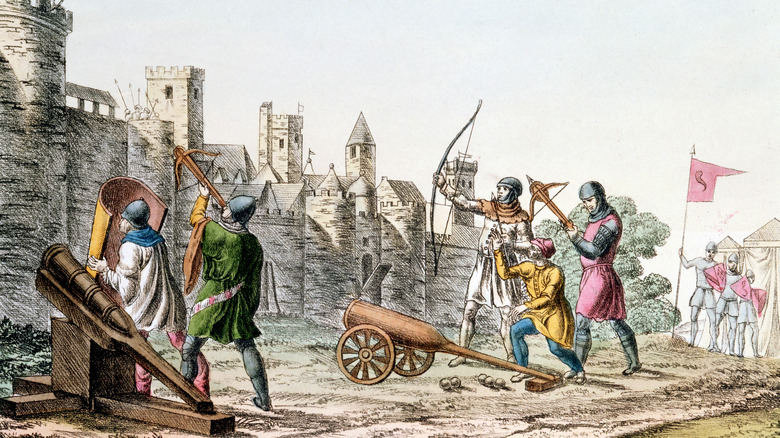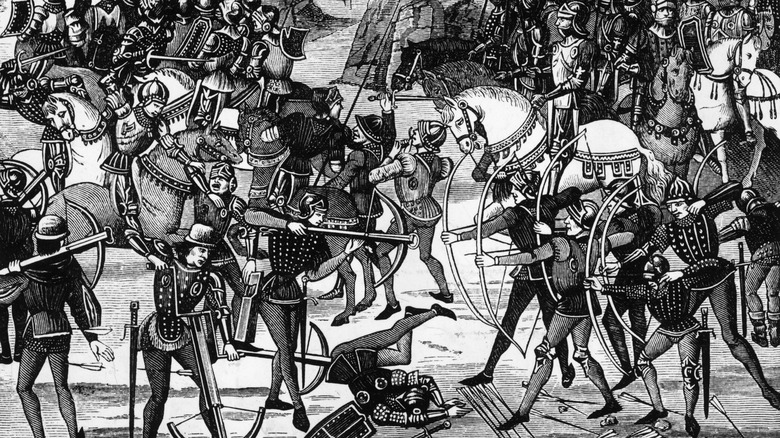Why Archery Practice Was Required In England During Medieval Times
According to Britannica, the oldest known examples of the bow and arrow were found in South Africa's Sibudu Cave; arrowheads of bone that are estimated to be 61,000 years old. The bow remained a valuable weapon for hunting and a fearsome force on battlefields worldwide for centuries, and archery remains globally popular for recreational and other purposes.
The longbowmen of England, in particular, left an indelible mark on the history of warfare. War History Online deems the longbow the "machine gun of the Medieval era," a powerhouse with an effective range of up to 350 yards and capable of firing every 10 seconds in the hands of experienced archers. It could reportedly penetrate all but the most potent armor of the time. It was utilized to devastating effect during this period, particularly during the Hundred Years War.
That conflict was marked by famous engagements such as the 1346 Battle of Crecy. Edward III of England had invaded the shores of Normandy, per History, and the French King Philip VI sent a force in response. Philip's army, consisting of approximately 8,000 knights on horseback and 4,000 crossbowmen, were decimated (around one third were killed) primarily by the skilled longbowmen (numbering around 10,000) of England. The longbow was vastly superior in fire rate and distance, History goes on, but it had a flaw: It demanded expert training to use effectively.
The weapon was so important that training was mandatory
War History Online explains that years of diligent training were required to learn to wield a longbow effectively (in contrast to the crossbow). The longbow's draw weight and power demanded both physical strength and technique. So strenuous was the use of the English longbow that it took a huge toll on archers' bodies: In 1971, the English warship the Mary Rose (which sank in 1545) was discovered, along with the remains of some archers. Their bones showed that their left sides were far more developed than their right and some bones were misshapen to reflect the technique used to 'lean into' the bow.
With the importance of the weapon to the war effort in Medieval England, combined with its unwieldy nature, the English government took steps to ensure that regular practice was mandatory. According to John Moore Museum, the first law to this effect was passed in 1252. It decreed that every male aged between 15 and 60 had to regularly train with the longbow.
ThoughtCo adds that younger archers-in-training progressed up to bows of the traditional longbow's great weight, and further laws (Edward I's banning of sports on Sundays), ensured that men stuck to longbow practice. Other world powers were unwilling to commit to this extensive training, which solidified the English army's dominance with the weapon.

